Filipino Chicken Adobo
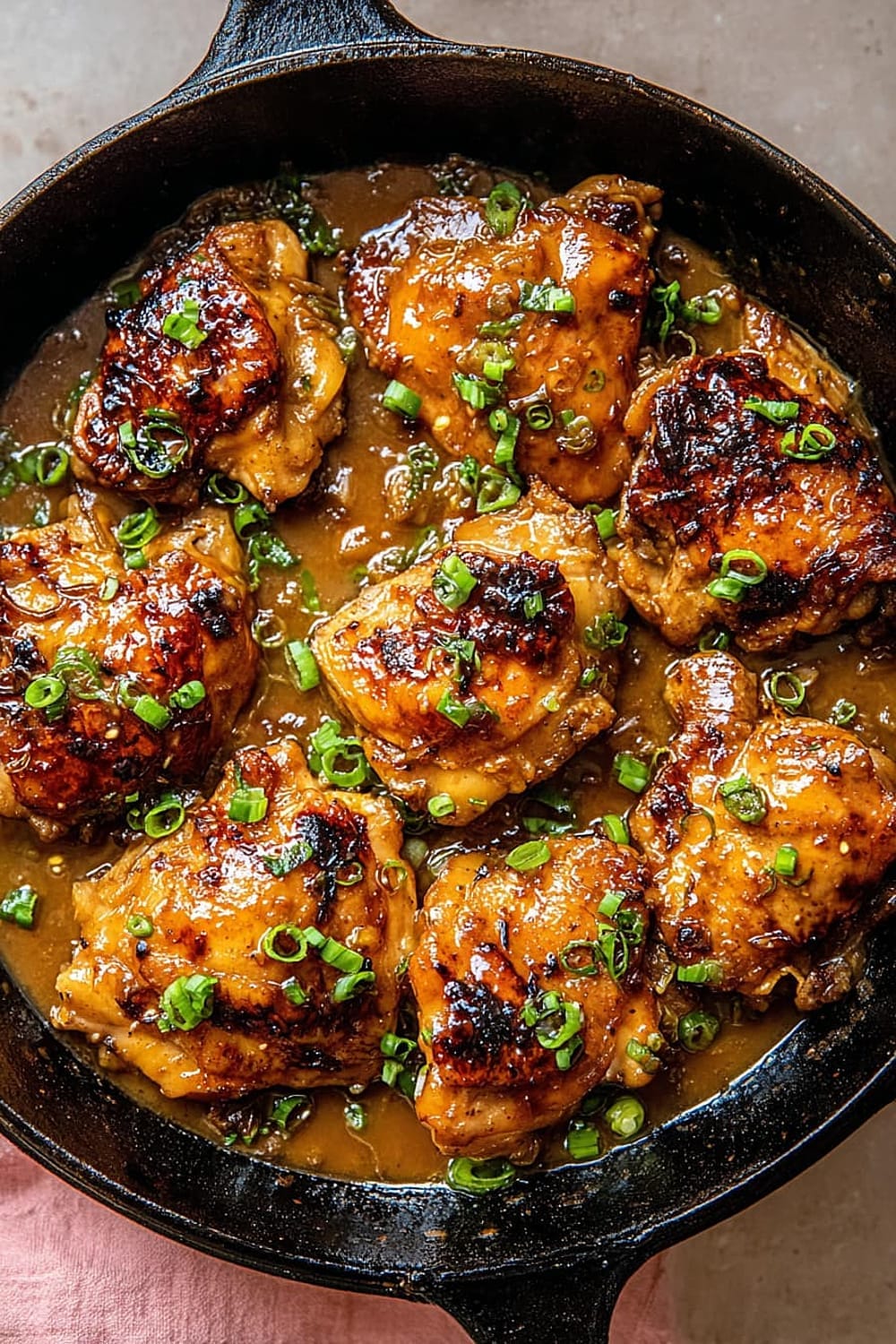
This recipe will have you questioning why you ever bothered with complicated marinades when pure magic happens with just vinegar, soy sauce, and garlic.
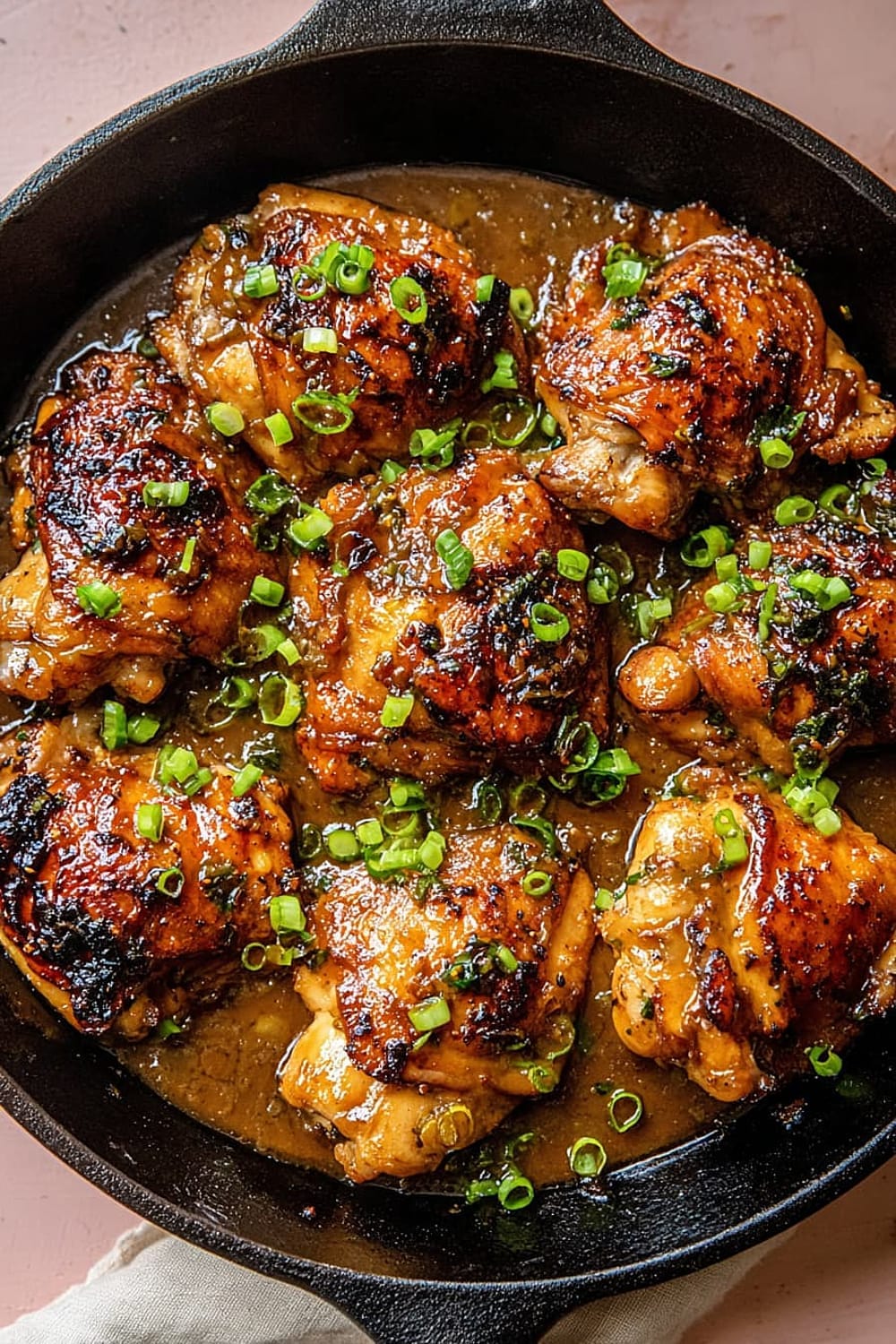
Filipino chicken adobo is basically the comfort food equivalent of a warm hug from your favorite tita, except you can make it in your own kitchen without needing to call anyone.
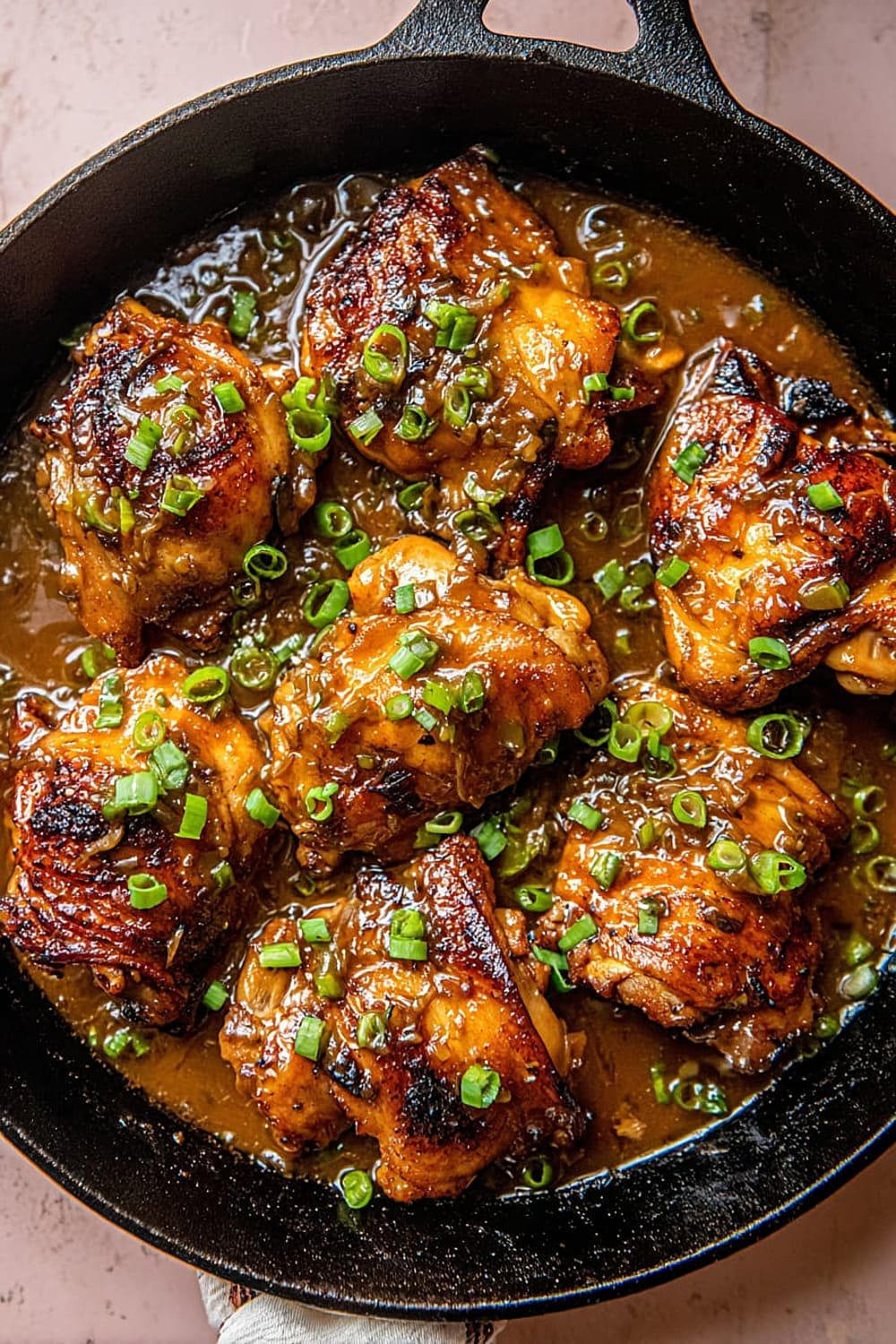
The beauty of adobo lies in its simplicity – you’re essentially creating liquid gold that transforms ordinary chicken thighs into fall-off-the-bone perfection.
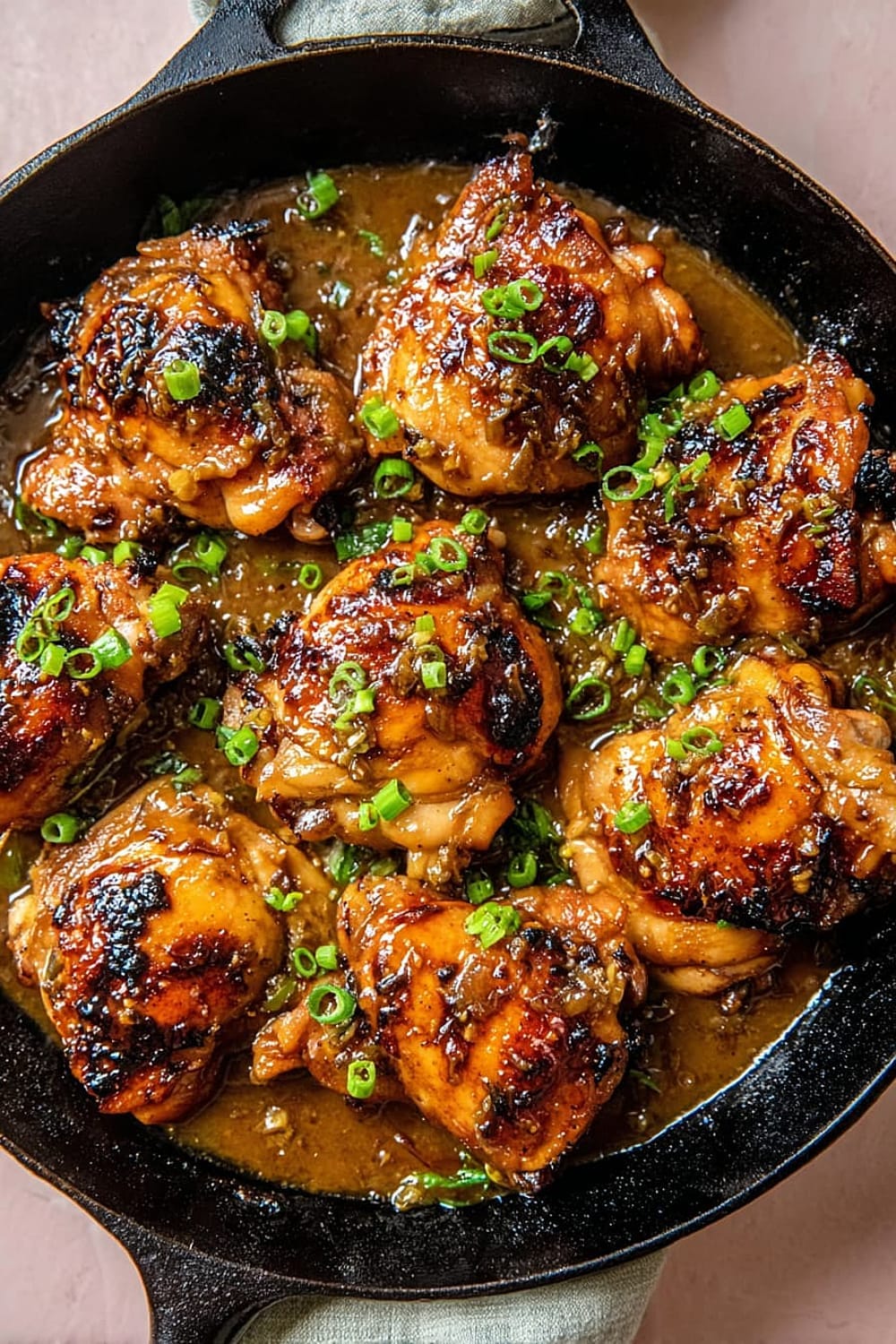
Fair warning: the aroma alone will have your neighbors mysteriously showing up at your door with flimsy excuses about needing to borrow sugar.
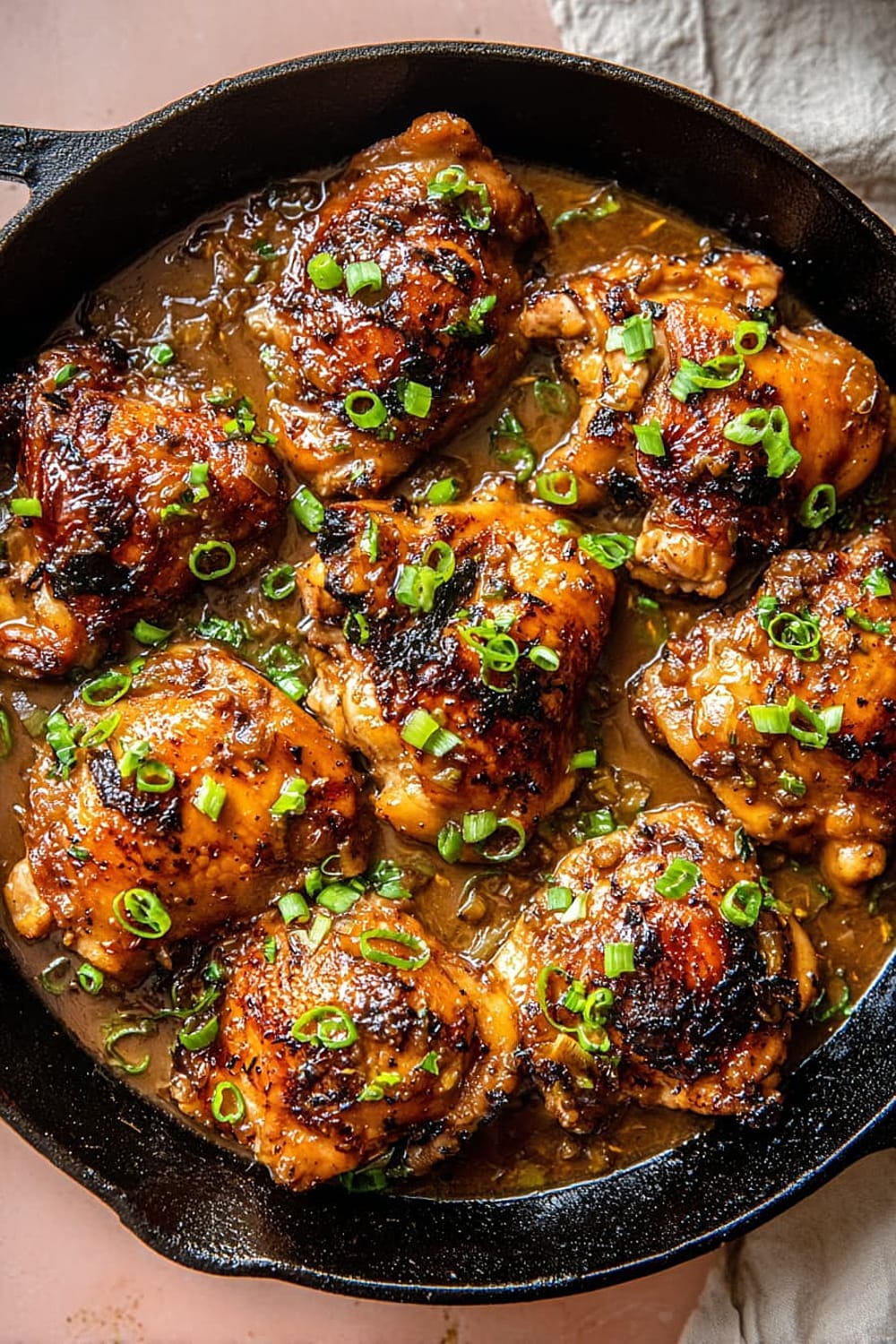
This isn’t just dinner; it’s your new secret weapon for looking like you actually know what you’re doing in the kitchen, even if you’re still figuring out how to properly fold fitted sheets.
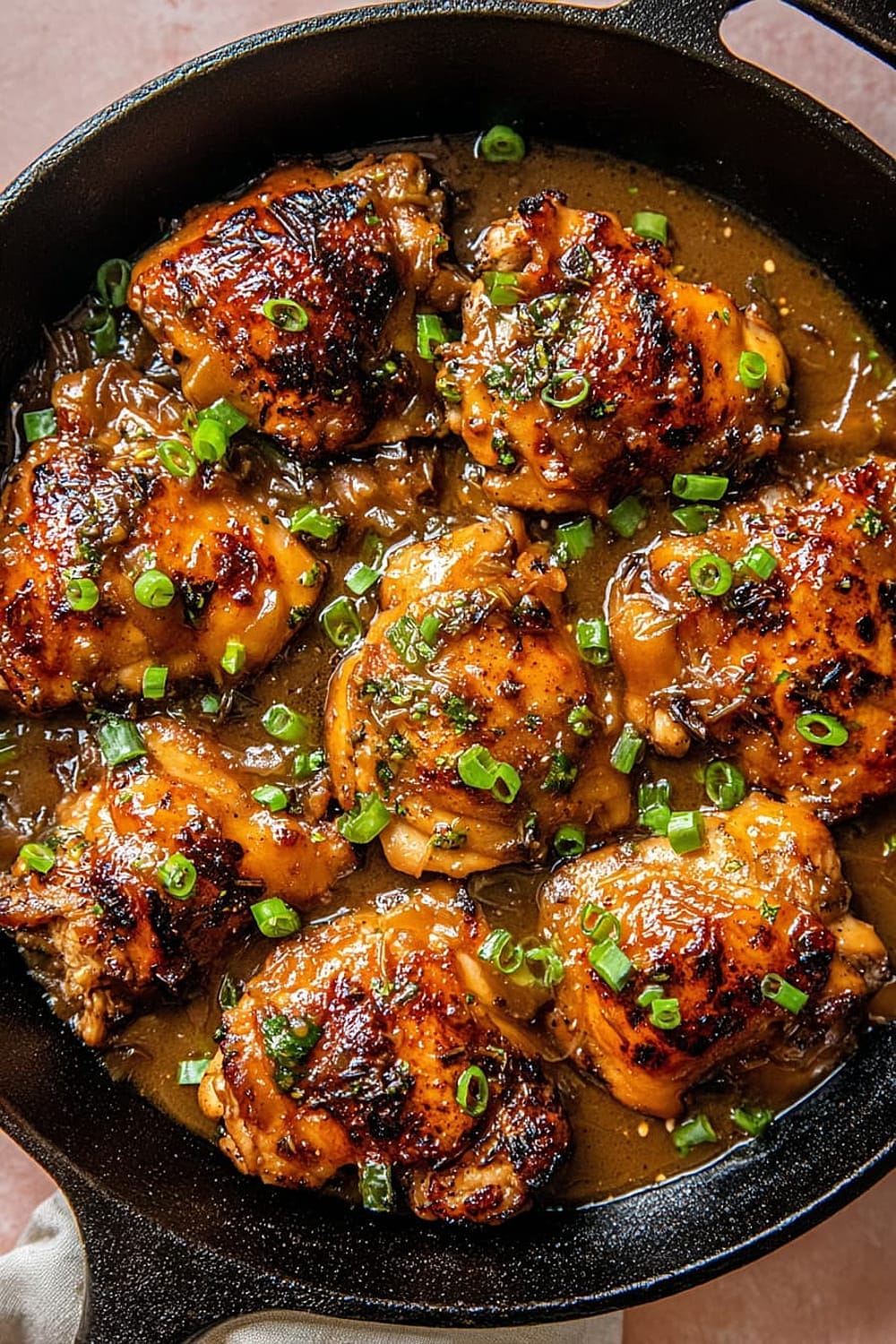
The tangy-sweet sauce reduces down to a glossy, caramelized coating that clings to every piece of chicken like it was meant to be there – because honestly, it was.
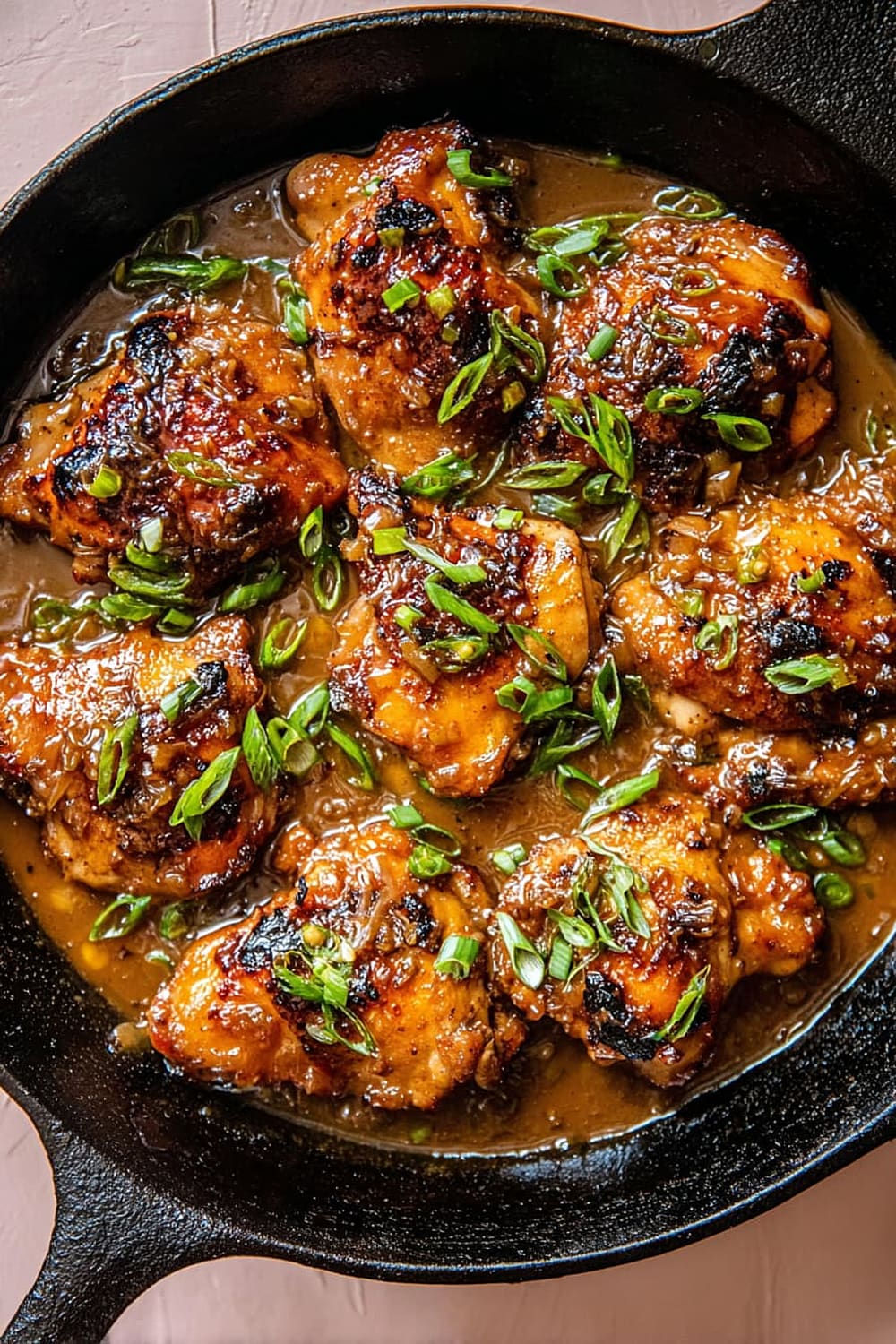
Ingredients
For the adobo marinade
- ¾ cup distilled white vinegar
- ½ cup low sodium soy sauce or tamari
- 8 cloves garlic, minced
- ½ teaspoon black peppercorns
- 2 bay leaves
- 1 tablespoon brown sugar
For the chicken
- 3 pounds boneless skinless chicken thighs, fat trimmed
- 2 tablespoons vegetable oil
For serving
- Cooked jasmine rice
- 4 green onions, thinly sliced
Instructions
Prepare the marinade
- 1 In a large mixing bowl, whisk together the ¾ cup vinegar, ½ cup soy sauce, minced garlic, black peppercorns, bay leaves, and 1 tablespoon brown sugar until the sugar completely dissolves. The mixture should smell intensely aromatic and slightly sharp from the vinegar.
- 2 Add the 3 pounds chicken thighs to the marinade, using tongs or clean hands to ensure every piece gets completely coated. Cover the bowl tightly with plastic wrap and refrigerate for at least 1 hour, though 3 hours will give you maximum flavor penetration. The acid in the vinegar will start tenderizing the meat immediately.
Brown the chicken
- 3 Heat 2 tablespoons vegetable oil in a large cast iron skillet or heavy-bottomed pan over medium-high heat until the oil shimmers and moves freely around the pan. This usually takes about 2-3 minutes.
- 4 Working in batches to avoid overcrowding, carefully place the marinated chicken thighs in a single layer, reserving all the precious marinade in the bowl. Cook undisturbed for 4 minutes – resist the urge to peek! You want a beautiful golden-brown crust to develop on the bottom.
- 5 Flip each piece using tongs and cook for another 4 minutes on the second side. The chicken should release easily from the pan when properly browned. If it’s sticking, give it another minute before flipping.
Simmer and reduce
- 6 Pour the reserved marinade directly into the skillet with the chicken and bring to a rolling boil over medium-high heat. You’ll hear it sizzle dramatically as it hits the hot pan – this is exactly what you want.
- 7 Reduce heat to medium-low to maintain a heavy simmer and cook for 10 minutes. The liquid should be bubbling steadily but not violently. Flip the chicken thighs halfway through this cooking time.
- 8 Continue simmering for another 10 minutes, stirring the sauce occasionally and flipping the chicken once more. The sauce should reduce by half and begin to thicken to a glossy, syrup-like consistency. Use an instant-read thermometer to ensure chicken reaches 165°F (74°C) internal temperature.
Serve
- 9 Remove from heat and let rest for 2-3 minutes. Serve the chicken thighs over steamed jasmine rice, spooning the reduced adobo sauce generously over everything. Garnish with thinly sliced green onions for a fresh pop of color and mild onion flavor.
Recommended Equipment and Kitchen Tools
Essential Tools (for best results)
- Large mixing bowl – Glass or stainless steel works best for marinating, as acidic ingredients can react with certain plastics
- Cast iron skillet or heavy-bottomed pan – Provides even heat distribution and excellent browning capabilities for developing that crucial caramelized crust
- Instant-read thermometer – Takes the guesswork out of ensuring your chicken reaches the safe internal temperature of 165°F
- Tongs – Essential for flipping chicken pieces without piercing the meat and losing those flavorful juices
Helpful Upgrades
- Digital kitchen scale – For precise measurements if you want to scale the recipe up or down for different crowd sizes
- Microplane grater – Makes quick work of mincing garlic to the perfect consistency for maximum flavor release
- Silicone spatula – Perfect for scraping every bit of that precious marinade from your mixing bowl
Nice-to-Have Options
- Food processor – If you’re making multiple batches or want perfectly uniform garlic pieces, though hand-mincing works perfectly fine
- Storage containers – Glass containers with tight-fitting lids are ideal for marinating and storing leftovers without absorbing flavors
Recipe Variations and Dietary Modifications
Gluten-Free Adaptation
- Replace regular soy sauce with tamari or coconut aminos in equal amounts
- Double-check that your vinegar is distilled white vinegar, which is naturally gluten-free
- Serve over rice noodles or cauliflower rice instead of regular rice if desired
Low-Sodium Version
- Use low-sodium soy sauce and reduce the amount to ⅓ cup
- Add 1 extra tablespoon brown sugar and 1 teaspoon rice vinegar to maintain flavor balance
- Enhance with additional garlic and a pinch of ground ginger
Coconut Adobo Variation
- Replace ¼ cup of the vinegar with coconut vinegar for a slightly sweeter, more complex flavor
- Add 2 tablespoons coconut milk during the final simmering stage for richness
- Garnish with toasted coconut flakes alongside the green onions
Spicy Version
- Add 2-3 Thai chilies or 1 jalapeño (sliced) to the marinade
- Include ¼ teaspoon red pepper flakes with the other seasonings
- Serve with sliced fresh chilies on the side for heat lovers
Pork Adobo Alternative
- Substitute pork shoulder cut into 2-inch cubes for the chicken
- Increase cooking time to 45 minutes total simmering time
- Add 1 extra bay leaf to complement the richer pork flavor
Nutritional Information and Health Benefits
Key Nutritional Highlights
Each serving of this Filipino chicken adobo provides approximately 340 calories with a powerful protein punch of 35 grams from the chicken thighs. The dish is naturally low in carbohydrates at just 8 grams per serving, making it suitable for various dietary approaches. The cooking method preserves most of the chicken’s natural nutrients while the marinade adds minimal calories but maximum flavor impact.
Health Benefits of Main Ingredients
The garlic in this recipe provides allicin, a compound known for its anti-inflammatory and immune-boosting properties. Black peppercorns contain piperine, which may enhance nutrient absorption and provide antioxidant benefits. The vinegar can help with blood sugar regulation and adds probiotics if you choose raw, unfiltered varieties. Chicken thighs offer high-quality complete protein, B-vitamins for energy metabolism, and selenium for immune function.
Dietary Considerations
This recipe is naturally gluten-free when made with tamari, dairy-free, and low-carb. The primary allergen consideration is soy from the soy sauce. The dish fits well into Mediterranean, paleo (with coconut aminos), and whole30 dietary patterns. One serving provides about 25% of daily protein needs for most adults, making it an excellent choice for muscle maintenance and satiety.
Smart Swaps and Ingredient Substitutions
Common Substitutions:
- Distilled white vinegar → Apple cider vinegar or rice vinegar (use same amount, expect slightly milder flavor)
- Low-sodium soy sauce → Coconut aminos for soy-free option (use ¾ the amount as it’s naturally sweeter)
- Brown sugar → Coconut sugar or maple syrup (same amount, adds subtle caramel notes)
- Vegetable oil → Avocado oil or coconut oil for higher heat tolerance
Budget-Friendly Swaps:
- Chicken thighs → Chicken drumsticks (increase cooking time by 5-10 minutes)
- Fresh garlic → Garlic powder (use 1 teaspoon powder for every 8 cloves)
- Bay leaves → Dried thyme or oregano (use ½ teaspoon total)
Pantry Emergency Substitutions:
- Black peppercorns → Ground black pepper (use ¼ teaspoon)
- Green onions → Regular yellow onion, finely diced (use 2 tablespoons)
- Jasmine rice → Any long-grain white rice or cauliflower rice for low-carb option
Pro Tips for Substitutions:
- When using coconut aminos, add an extra tablespoon of vinegar to maintain the proper acid balance
- If substituting chicken breasts for thighs, reduce cooking time by 5 minutes and watch temperature carefully to prevent drying
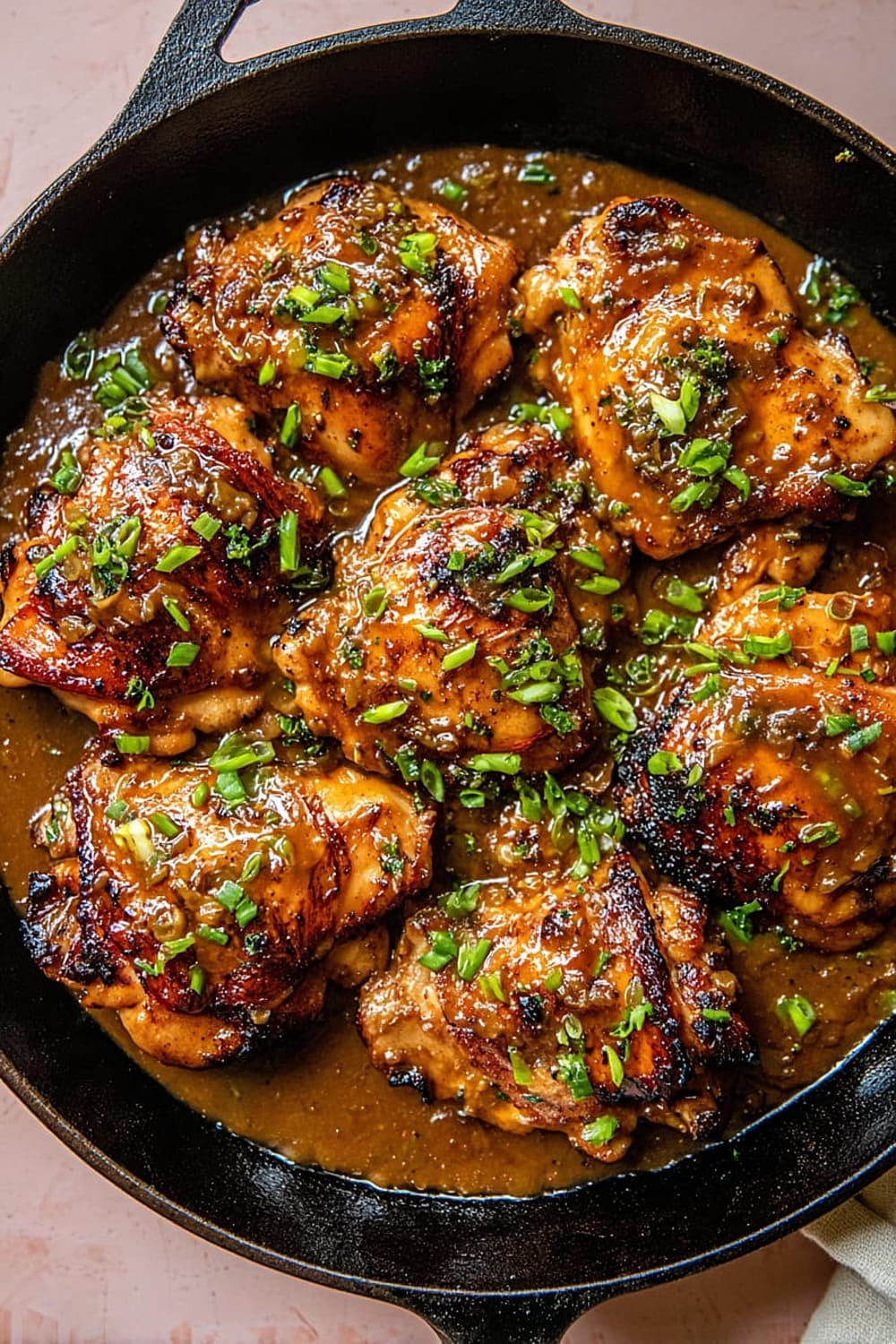
Make It Diabetes-Friendly
Sugar Modifications:
- Replace the 1 tablespoon brown sugar with 1 teaspoon stevia or 1 tablespoon sugar-free brown sugar substitute
- Carb reduction: Saves approximately 12 grams carbohydrates per batch, or 2 grams per serving
- The natural sweetness from the caramelized garlic and reduced vinegar will still provide pleasant flavor balance
Serving Modifications:
- Serve over cauliflower rice instead of regular rice to reduce carbs by 35 grams per serving
- Use shirataki rice or konjac rice as zero-carb alternatives
- Pair with steamed broccoli or green beans for added fiber and nutrients
Portion & Timing Tips:
- Recommended serving: 5-6 oz chicken with ½ cup cauliflower rice
- Total carbs per modified serving: Approximately 4 grams net carbs
- Pair with healthy fats like sliced avocado to slow glucose absorption
- The high protein content helps maintain stable blood sugar levels
Blood Sugar Benefits:
- Vinegar may help improve insulin sensitivity and glucose uptake
- High protein content promotes satiety and steady energy levels
- Minimal processed ingredients support better glycemic control
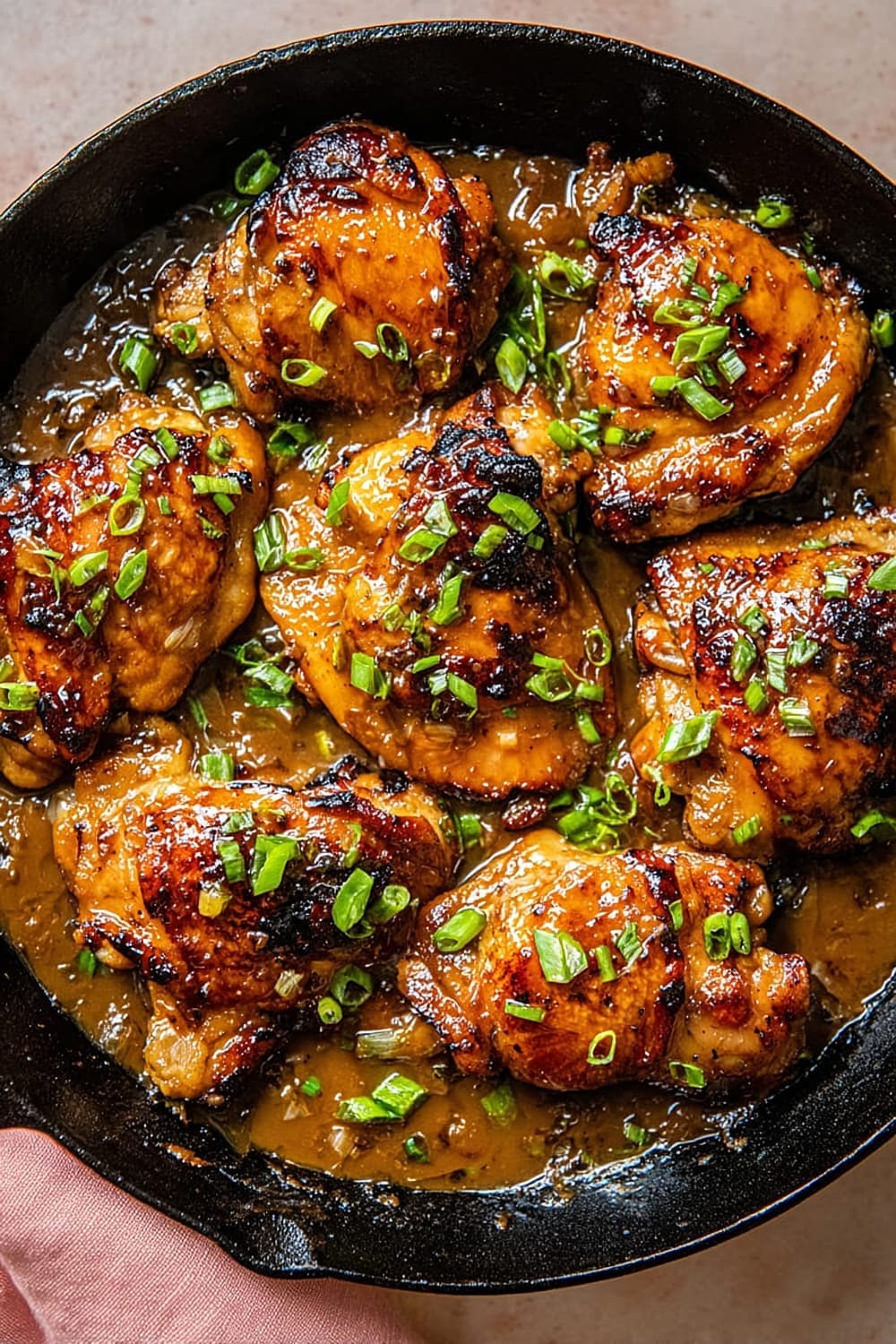
Perfect Pairing Suggestions
Beverage Pairings
A crisp Riesling or Gewürztraminer beautifully balances the tangy-sweet adobo sauce, while the wine’s acidity complements the vinegar base. For beer lovers, a Filipino San Miguel or Japanese Asahi provides the perfect light, clean finish. Non-alcoholic options include iced green tea with lemon or sparkling water with calamansi if you can find it, though lime works wonderfully too.
Side Dish Recommendations
Garlic fried rice (sinangag) is the traditional accompaniment that soaks up every drop of that precious adobo sauce. Steamed Asian vegetables like bok choy or gai lan provide a fresh, slightly bitter contrast to the rich chicken. Pickled vegetables (atchara) cut through the richness beautifully, while grilled pineapple adds tropical sweetness that pairs surprisingly well with the tangy marinade.
Complete Meal Ideas
Start with lumpia (Filipino spring rolls) as an appetizer, serve the adobo as your main course with jasmine rice and sautéed kangkong (water spinach), and finish with halo-halo or simple mango sticky rice for dessert. For casual entertaining, set up a Filipino feast with pancit noodles, grilled bangus (milkfish), and fresh tropical fruits.
Occasion Suggestions
This recipe shines at family gatherings and potluck dinners where its make-ahead nature and crowd-pleasing flavors really shine. Perfect for Sunday meal prep or weeknight comfort food when you need something satisfying but not complicated.
Pro Tips and Troubleshooting
Professional Techniques
Don’t skip the browning step – those caramelized bits (fond) on the bottom of the pan add incredible depth to your final sauce. When reducing the marinade, tilt your pan occasionally to check consistency; it should coat the back of a spoon when properly reduced. For restaurant-quality results, let the chicken rest in the finished sauce for 5 minutes before serving to allow the flavors to meld completely.
Common Mistakes and Solutions
If your sauce isn’t thickening, increase heat slightly and simmer uncovered until it reduces properly – patience is key here. Overcrowding the pan during browning creates steam instead of searing, so work in batches even if it takes longer. If the sauce tastes too acidic, add an extra ½ teaspoon brown sugar; too salty means you need more acid, so add 1 tablespoon vinegar.
Storage and Reheating
Adobo actually improves overnight as flavors continue to develop. Store in the refrigerator for up to 4 days or freeze for 3 months. Reheat gently in a covered pan with a splash of water to prevent the sauce from burning. The chicken can be shredded and used in sandwiches, tacos, or fried rice for delicious leftovers.
Make-Ahead Strategy
Marinate the chicken up to 24 hours in advance for even deeper flavor penetration. You can complete the entire recipe and refrigerate, then reheat when ready to serve – this actually enhances the taste.
This Filipino chicken adobo proves that the best recipes often have the simplest ingredient lists but deliver the most complex, satisfying flavors. Once you master this technique, you’ll find yourself making it on repeat, tweaking the ratios to suit your taste, and probably getting requests to bring it to every gathering you attend. The beauty lies not just in its incredible taste, but in how it connects you to centuries of Filipino culinary tradition with every single bite.